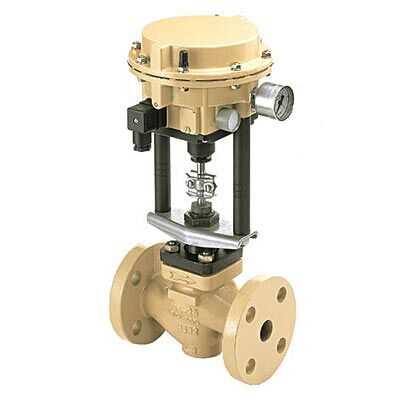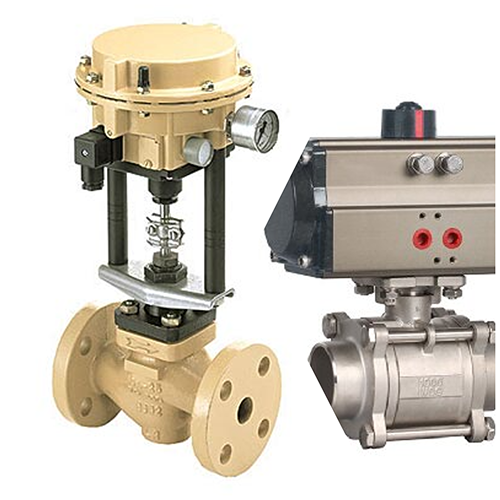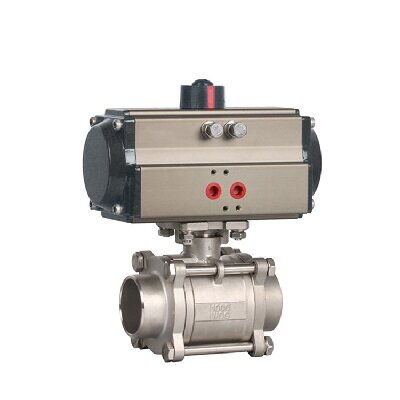Comparative Analysis of Pneumatic On-Off and Control Valves
On this page
In the field of industrial automation, the selection and application of valves directly impact system efficiency and safety. Pneumatic on-off valves and pneumatic control valves are two common and critical types, each possessing unique functionalities and applications. Understanding their operational principles, accessory options, and functional differences is crucial. This article aims to comprehensively compare pneumatic on-off valves and pneumatic control valves in terms of accessory options, functional use, and other aspects to aid in selecting the appropriate valve type for specific operational conditions.
Pneumatic on-off valves typically offer the following accessories:
Solenoid valve: Controls the on-off operation by managing the air supply.
Limit switch: Monitors valve position status, providing feedback for operational accuracy.
Filter pressure regulator: Filters impurities from the air supply and regulates air pressure to ensure stability and cleanliness.
Pneumatic control valves must include a positioner to enable their control function, and may also include:
Positioner: Converts control signals into corresponding air pressure signals to precisely control valve opening, ensuring accuracy during adjustment.
Solenoid valve, limit switch, filter pressure regulator: These accessories are similar to those used with pneumatic on-off valves, enhancing control precision and operational stability.

The primary function of pneumatic on-off valves is to control the opening and closing of pipeline media and for emergency shutdowns. They operate on a simple principle, with fast response times, suitable for applications such as:
Emergency shutdown systems: Quickly halting media flow in safety incidents to protect equipment and personnel.
General on-off controls: Daily operational control of media flow to ensure system normalcy.
Pneumatic control valves are primarily used for precise adjustment of parameters within pipeline media. When paired with a positioner, they utilize 4-20mADC signals and 0.4-0.7MPa air sources to control valve openings, enabling adjustment of parameters such as:
Pressure: Controls pipeline pressure to maintain system stability.
Flow rate: Adjusts flow volume to meet production process requirements.
Temperature: Regulates system temperature by adjusting media flow.
Liquid level: Controls liquid levels in tanks or containers by adjusting inflow and outflow rates.
Pneumatic On-Off Valves: Focus primarily on valve opening and closing speeds, with no specific requirements for flow characteristics.
Pneumatic Control Valves: Require smooth flow characteristics throughout the entire opening range to ensure adjustment accuracy and stability.
Pneumatic On-Off Valves: Require high switching speeds for emergency shutdowns, necessitating quick response to achieve media cutoff.
Pneumatic Control Valves: Require high stability during opening adjustments to ensure adjustment accuracy for parameters.
Pneumatic On-Off Valves: Structurally simpler, primarily used for fast on-off control, suitable for frequent opening and closing or emergency shutdown scenarios.
Pneumatic Control Valves: More complex structure, requiring positioners and other accessories, suitable for precise adjustment applications such as production process control.
Pneumatic On-Off Valves: Relatively simple drive mechanism with valve body designed for fast opening and closing.
Pneumatic Control Valves: Complex drive mechanism with valve body designed for precise adjustment, often incorporating more sophisticated mechanical and electronic components.
Conclusion
Pneumatic on-off valves and pneumatic control valves differ significantly in accessory options, functional uses, and structural characteristics. Understanding these differences helps in selecting the appropriate valve type for specific operational needs, ensuring efficient and stable system performance. When choosing valves, it's essential to consider specific operational environments and functional requirements to maintain high system efficiency and stability.


